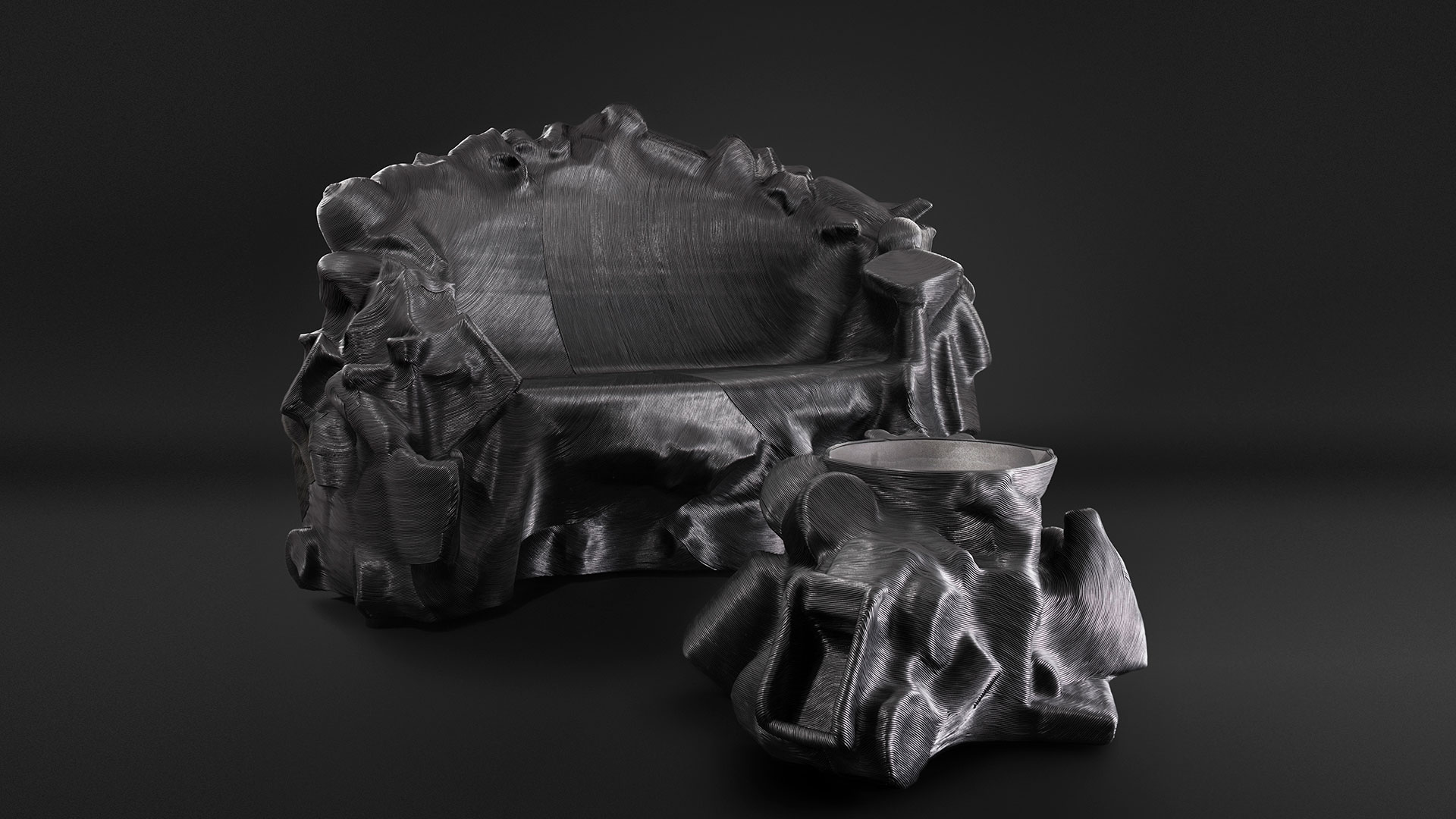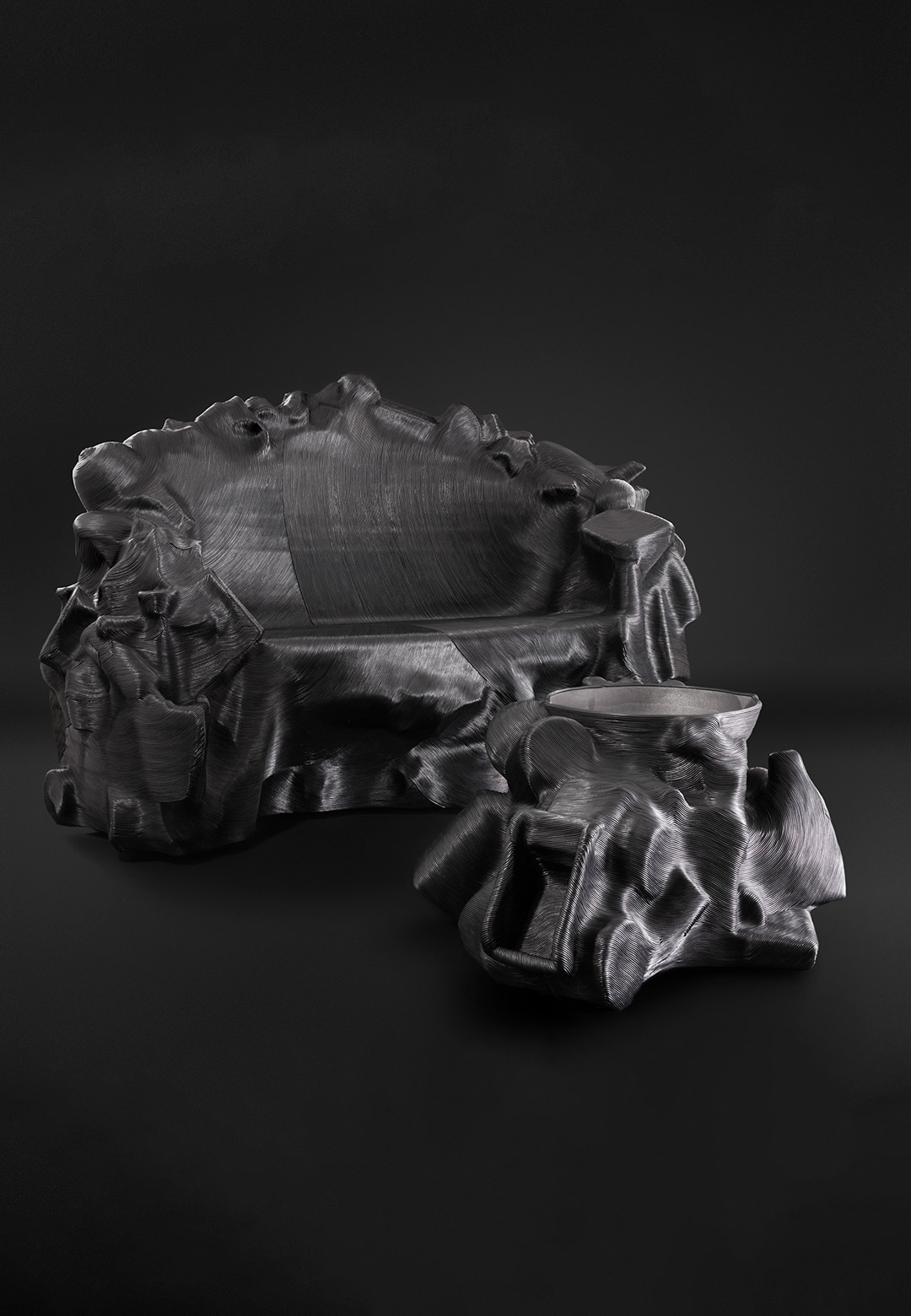Has a blatant disposable culture led us to overlook the potential in the seemingly invaluable? Waste, in today’s scenario, is a mammoth that expands with each passing minute. Copious discards from industries such as food, clothing and furniture augment the already colossal heap of waste that stifles the planet. This growing propensity of abandoning objects that either no longer fit the elusive standards of perfection or fail to serve their pre-defined function—or perhaps merely lose the charm of novelty—curbs both the advancing life cycle of the object as well as the creative possibilities of it to shapeshift into a new one. Justifiably so, the issue of abundant waste is frequently broached in discourses surrounding sustainability. As opposed to being the terminus, landfills now mark a design’s origin with designers choosing not to add to the mound but rather take from it.
Hailing from South Korea and now based in Seattle, United States, Jay Sae Jung Oh is one such designer who transforms mundane objects into intricate unique compositions. Through her creative endeavours as a furniture and product designer, artist and entrepreneur, she explores the intersection of sculptural art and design. Oh’s ongoing 'Salvage' series encompasses seemingly rugged designs in which one will catch glimpses of household objects intricately hand wrapped in raw leather or jute. The plastic objects that make up the creations are transformed and consolidated into a sculptural entity—making an impactful statement about the cultural condition of abundance and obsolescence. The growing ‘salvage’ repository features chair designs, sofas, table designs, stool designs, planters and wall organisers. In a conversation with STIR, Oh elucidates the conception and evolution of her on-of-a-kind oeuvre, sharing the much-organised thoughts that cultivate her erratic designs.
Anushka Sharma: What was the main inspiration behind the Salvage series?
Jay Sae Jung Oh: The genesis of my inspiration lies in the everyday objects that inhabit our lives. Despite being surrounded by so many objects, we often fail to acknowledge their value and are constantly consumed by the pursuit of new things. Industrial designers are responsible for resolving problems and making lives better with well-designed products. I have often contemplated whether there is a different approach to tackle the problem of our disposable culture—by using what we throw away instead of producing a new product. This led to the inception of the Salvage Series.
Anushka: Your design practice is guided by larger issues such as sustainability and the prevailing disposable culture. When did you first find yourself interested in the value of waste?
Jay: During my study at Cranbrook, I encountered overflowing dumpsters on campus all the time. As my colleagues and I created countless prototypes to present our new product designs to major corporations, I couldn’t help but ponder over the possibility of my own designs ending up in those dumpsters one day. This realisation sparked a newfound interest in the object we manufacture and consume, the waste we generate and the challenges and problems they pose.
Anushka: How does your previous experience with sculptural art and 3D design inform your creations?
Jay: I believe that exposure to different cultures—I was born and raised in Seoul, South Korea, was educated and pursued my teaching career in the United States, and also gained work experience in a European company a few years in New York City—and education in both art and design is a big asset for me. It helped me a lot in approaching the design in various ways. Although it is difficult to articulate precisely how it impacts me, it must have naturally influenced me.
Anushka: You organically wrap discarded objects in materials such as leather or jute to achieve the designs. What are the measures you take to ensure comfort and functionality in the furniture?
Jay: I always put a lot of effort and time into creating a strong foundation, ensuring that every component is securely assembled to withstand the weight of the individual pieces over a prolonged period of time. The final pieces are comfortable and sturdy. I believe that design must always incorporate function before aesthetics.
Anushka: The silhouettes you craft are extremely unique and expressive. Where do you look for inspiration? Are there certain bodies of work you take reference from?
Jay: I don’t look for specific inspiration for the Salvage Series. The choice of objects ultimately determines the form. The spontaneous and unplanned nature of the creative process is what lends to the beauty of this design.
Anushka: In your armchair recently showcased at S94Design, we can see the silhouettes of a guitar, a trumpet and a drum set woven into the form. Do you abide by such themes in every piece or does it fall in place organically?
Jay: For the armchair displayed at Chatsworth House in the UK, upon receiving the commission from them a year ago, I was provided with details and photos of both the Chatsworth House and the State Music room, where my piece is currently showing. Adhering to the room’s theme, I collected abandoned musical instruments and designed a throne from these materials. There are times when the object composition group is set according to the subject, but normally it is composed naturally according to the objects I have when I am designing a piece.
Anushka: The composition of the Salvage wall organiser is quite intriguing, given its form that can easily pass as a sculptural wall hanging. Can you talk us through the conception and making of this work?
Jay: That piece is made of many of my personal objects that I cherish. Each of those objects is associated with memories and has a special meaning for me. For instance, one of the objects I used is a souvenir from my family trip to Paris I had saved from when I was ten years old. Every time I see it, it reminds me of happy memories of that time. It is old and useless, yet personally very special to me. I am sure everyone has such an object of their own.
I have been working on this series for over 10 years. Oftentimes, I think about what an object means to people. They represent who we are—our memories, culture, and history. I hope my design can give us a chance to rethink what we currently have, and what we live with.
Anushka: What considerations do you make while choosing materials and production methods for the furniture pieces?
Jay: The initial stage involves deciding the type and scale of the furniture I want to design. This is followed by gathering objects and assembling them into a new form. Once the form has been created, patterns are designed for the outer surface and it is wrapped with leather accordingly.
Anushka: The process of assembling different elements into an appealing composition and binding them together is quite effort-intensive. What poses the biggest challenge in this journey?
Jay: Intensive handcraft process is always challenging and key to the Salvage Series. It is an intentional process to show its contrast from mass-produced objects, the majority of which are made out of plastic.
Anushka: What is NEXT for you?
Jay: Currently, I’m preparing for a solo show coming up early next year at S94Design in New York.






 Sign in with email
Sign in with email










What do you think?